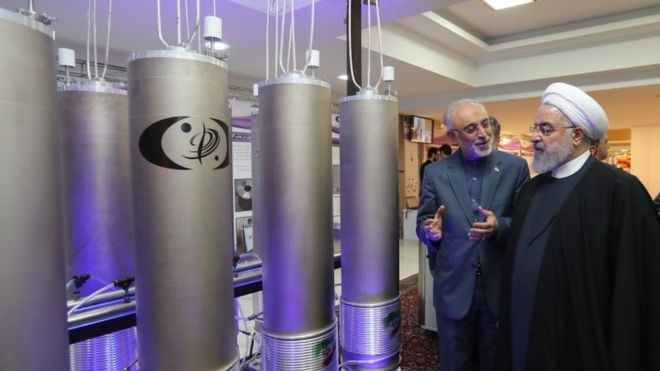Amid high tensions in the Persian Gulf region after the June 13 incident, where two tankers were allegedly attacked by unknown sources, the Iranian Atomic Energy Organization (IAEO) declared on Monday its intention to increase the level of production of low enriched uranium. IAEO spokesperson Behrouz Kamalvandi said Iran would reach the limit of stockpile of enriched uranium (300 kgs), allowed in the Joint Comprehensive Plan of Action (JCPOA), by June 28. He said that after this limit was achieved, Iran would go further and increase the production. The low enriched uranium cannot be used for nuclear weapons. It is primarily used for nuclear energy reactors.
The JCPOA was signed in 2015 between Iran and the United States, with Russia, the United Kingdom, Germany, France and China as other signatories, primarily to end the alleged Iranian nuclear program. Iran had agreed to allow greater access to the International Atomic Energy Agency to its nuclear centers and to restrict the production of enriched uranium. It had to transfer the surplus enriched uranium (almost 98% of it) to Russia under the deal. According to the deal, Iran cannot exceed the stockpile of enriched uranium before 2031. Iran had agreed to the terms in exchange for the lifting of sanctions imposed by the US and other countries.
In 2018, the Donald Trump administration unilaterally withdrew from the deal and imposed fresh economic sanctions on Iran. Iranian prime minister Hasan Rouhani, on May 8, had given a 60-day ultimatum to the rest of the signatories to save the Iranian economy from the effects of the sanctions or be ready for an Iranian withdrawal. Since then, Iran has been slowly increasing the production of low enriched uranium. However, it is still within the limits set by the JCPOA. Recently, in Tajikistan, Rouhani reiterated his stance. Meanwhile, the Europeans and Russians have asked Iran to keep complying with the provisions of the deal. They fear that Iranian non-compliance will feed aggressive American postures which will reduce the chances of saving the deal.
The US has blamed Iran for the June 13 attacks. In a press briefing on June 14, secretary of state Mike Pompeo talked about an unknown intelligence report as proof of Iranian involvement in the attacks on tankers in the Gulf of Oman near the Strait of Hormuz. He also blamed Iran for the May 12 incident at the Fujairah Port where four ships were damaged by an alleged attack. The US Central Command has released a grainy video in which, it claims, the Iranian Revolutionary Guard Corps personnel are seen removing limpet mines. On Monday too, the US released new images, which according to it showed the involvement of the Iranian Revolutionary Guard Corps (IRGC). in the incident. The US had recently designated the IRGC as a terrorist organization. Saudi crown prince Mohammad bin Salman has also reiterated the allegations of Iranian involvement. Iran has denied any such involvement and called these allegations ridiculous and an attempt of “sabotage diplomacy”.
Not complying with certain sections of the JCPOA is allowed in case one or more signatories withdraw from it. This partial non-compliance will not mean the end of the deal. However, given the domestic pressure to respond to US arm-twisting and threats, it will be difficult for the Iranian government to continue following the deal until the signatories come up with an alternative measure to cope with the effects of the sanctions. The Iranian government is using the warnings as a countermeasure to pressurize the signatories to take effective measures to save the deal.





